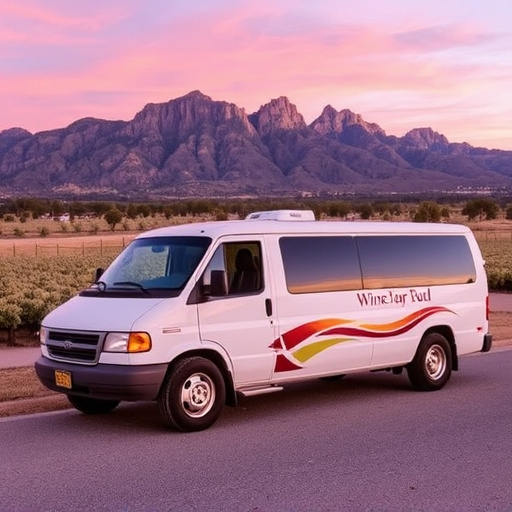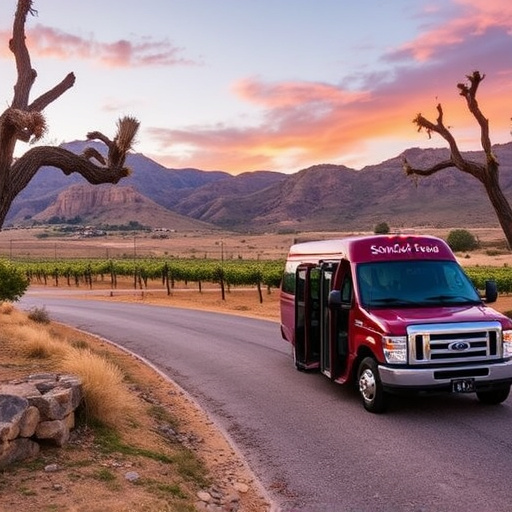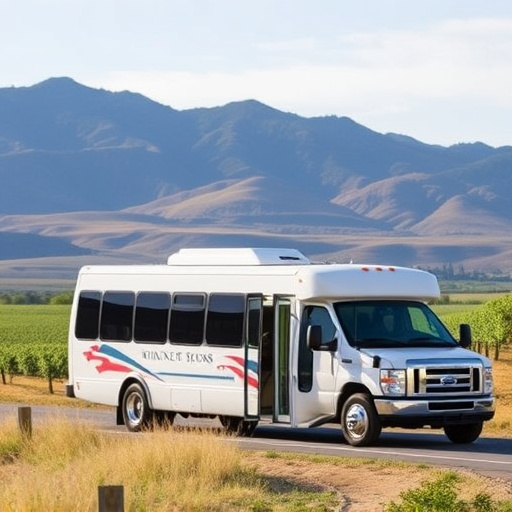The Sonoita Wine Trail introduces electric shuttle fleets as a sustainable alternative to traditional, fossil-fuel powered wine tour transportation. This eco-friendly initiative aims to reduce carbon emissions, air pollution, and ecosystem degradation during peak seasons. Electric shuttles provide a quieter, cleaner, and more peaceful experience for tourists while promoting responsible tourism practices. Despite challenges like range anxiety and charging infrastructure needs in rural areas, the shift towards electric shuttles is expected to revolutionize wine tourism, cater to environmentally conscious travelers, and enhance visitor experiences through advanced technologies.
“Discover how electric shuttle fleets are transforming the Sonoita Wine Trail into a trailblazer for sustainable tourism. This article explores the significant impact of transportation on carbon footprints in wine regions, introducing electric shuttle services as an eco-friendly solution. We delve into the benefits for visitors, environmental advantages, and challenges faced.
From reduced emissions to enhanced visitor experiences, electric shuttles are revolutionizing wine tours. Stay tuned to explore the future of eco-friendly wine tours, including emerging trends and innovations shaping this green movement.”
- Understanding the Impact of Transportation on Carbon Footprints in Wine Regions
- Introducing Electric Shuttle Fleets: A Sustainable Solution for Wine Tours
- Benefits of Electric Shuttles for Sonoita Wine Trail Visitors
- How Electric Fleet Reduces Emissions and Environmental Impact
- Challenges and Considerations for Implementing Electric Shuttles in Wine Country
- The Future of Eco-Friendly Wine Tours: Trends and Innovations
Understanding the Impact of Transportation on Carbon Footprints in Wine Regions
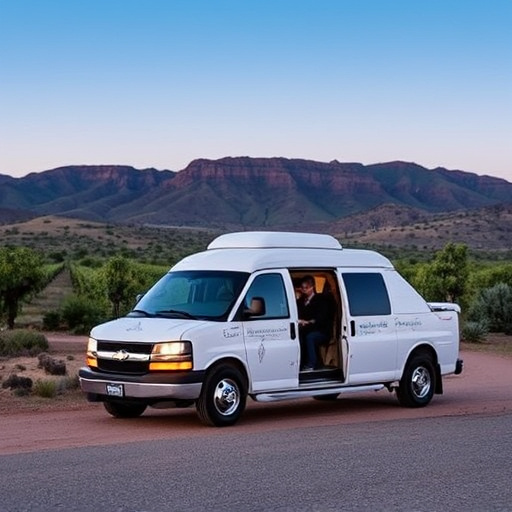
In wine regions like Sonoita, transportation plays a significant role in shaping their carbon footprint. Traditional modes of wine tour shuttles often rely on fossil fuels, contributing to greenhouse gas emissions and environmental degradation. This is particularly concerning given the dense tourist traffic during peak seasons, exacerbating the impact on local ecosystems and climate change.
The introduction of electric shuttle fleets offers a promising solution to mitigate these effects. By transitioning to electric transportation, wine tour operators can significantly reduce their carbon footprint. Electric shuttles produce zero tailpipe emissions, minimizing air pollution and helping to preserve the region’s natural beauty for future generations of wine enthusiasts. This shift not only benefits the environment but also enhances the overall visitor experience by promoting a more sustainable and responsible tourism model in Sonoita.
Introducing Electric Shuttle Fleets: A Sustainable Solution for Wine Tours

Introducing Electric Shuttle Fleets: A Sustainable Solution for Wine Tours
In the pursuit of sustainable practices, the Sonoita Wine Trail has embraced a novel approach to reduce its carbon footprint—electric shuttle fleets. This eco-friendly initiative aims to transform the traditional wine tour experience while minimizing environmental impact. By replacing gas-powered vehicles with electric shuttles, wine enthusiasts can now enjoy seamless transportation between vineyards and wineries without contributing to greenhouse gas emissions.
Electric shuttle fleets offer a myriad of benefits for both tourists and the trail’s ecosystem. With zero-emission technology, these shuttles provide a quieter and cleaner alternative, enhancing the overall visitor experience. Moreover, their energy efficiency contributes to the conservation of natural resources, ensuring that the Sonoita Wine Trail remains a pristine destination for years to come.
Benefits of Electric Shuttles for Sonoita Wine Trail Visitors
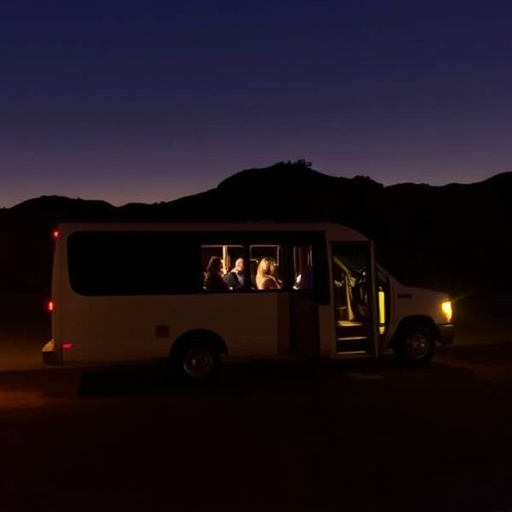
Electric shuttles are transforming the way visitors explore the beautiful Sonoita Wine Trail. These eco-friendly vehicles offer a range of benefits, making wine tours more accessible and sustainable for all. One of the key advantages is their zero-emission technology, which significantly reduces carbon footprints compared to traditional gas-powered shuttle services. By adopting electric shuttles, the wine trail can contribute to cleaner air and a healthier environment for both locals and tourists.
Additionally, these shuttles provide a comfortable and efficient way for visitors to navigate between various wineries and scenic stops along the trail. With reduced noise pollution, passengers can enjoy a peaceful journey while discovering the region’s vibrant wine culture. Electric shuttles also offer cost savings for tour operators by eliminating fuel expenses and potentially reducing maintenance costs due to their advanced technology. This shift towards sustainability ensures that the Sonoita Wine Trail remains an appealing destination for environmentally conscious travelers seeking unique and memorable experiences.
How Electric Fleet Reduces Emissions and Environmental Impact
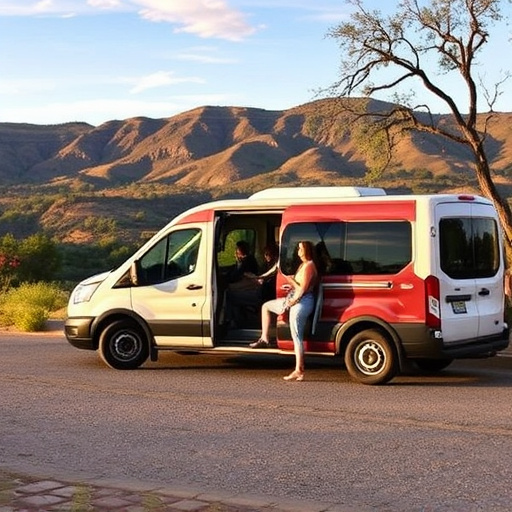
The transition to an electric shuttle fleet for the Sonoita Wine Trail is a significant step towards reducing carbon emissions and minimizing the environmental impact of wine tours. Traditional gas-powered vehicles contribute to air pollution, releasing harmful greenhouse gases and pollutants that can negatively affect both local ecosystems and the overall climate. In contrast, electric shuttles produce zero tailpipe emissions, significantly lowering the trail’s carbon footprint.
By eliminating the need for fossil fuels, these electric vehicles not only reduce air pollution but also contribute to a more sustainable and eco-friendly wine tourism experience. The reduced noise levels of electric motors provide a quieter ride for visitors, enhancing their overall enjoyment of the scenic trail while fostering a sense of harmony with the surrounding natural environment.
Challenges and Considerations for Implementing Electric Shuttles in Wine Country
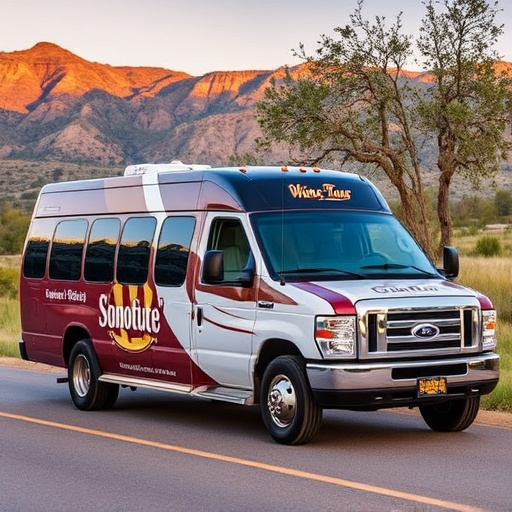
Implementing electric shuttles for wine tours in scenic areas like Sonoita presents unique challenges and considerations. One primary concern is range anxiety—the fear that the shuttle’s battery won’t last the entire tour, potentially stranding passengers. Wine country landscapes are often characterized by winding roads and remote vineyards, which require robust batteries capable of handling varied terrain and unexpected stops.
Additionally, charging infrastructure plays a pivotal role in the success of electric shuttle services. In rural areas like Sonoita, installing and maintaining charging stations along popular tour routes could be cost-prohibitive and logistically complex. Efficient battery swapping systems or ultra-fast charging technology might be necessary to address these challenges, ensuring a seamless experience for wine enthusiasts while minimizing the environmental benefits of electric shuttles.
The Future of Eco-Friendly Wine Tours: Trends and Innovations
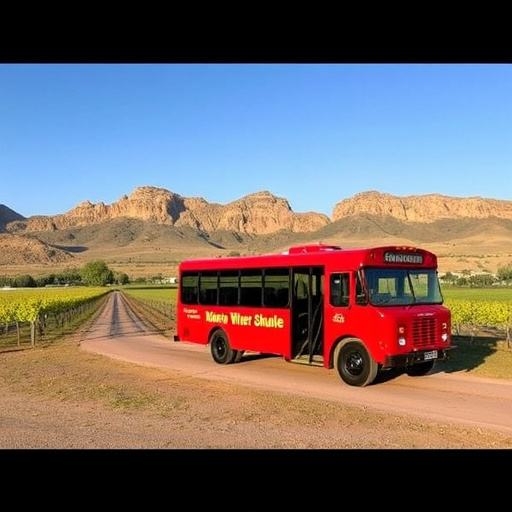
The future of wine tourism is increasingly focused on sustainability and eco-friendly practices, especially in popular wine regions like Sonoita. One of the notable trends is the adoption of electric shuttle fleets for wine trail tours. This innovation significantly reduces carbon emissions, providing a greener alternative to traditional gas-powered vehicles. With the growing awareness about climate change, many wineries and tour operators are embracing these sustainable solutions.
Electric shuttles offer several advantages, including quieter operations, lower maintenance costs, and improved passenger comfort. As technology advances, we can expect more sophisticated features such as solar-powered charging stations, autonomous navigation systems, and even shared mobility apps for efficient wine trail exploration. These trends paint a picture of a more sustainable and enjoyable future for Sonoita wine tour shuttles, appealing to environmentally conscious travelers while minimizing the region’s carbon footprint.
Electric shuttle fleets are transforming the way we enjoy wine tours, significantly reducing the carbon footprints of regions like Sonoita. By adopting this sustainable solution, wine trail visitors can experience the beauty of the landscape without contributing to environmental harm. As technology advances and awareness grows, the future of eco-friendly wine tours looks brighter, promising a harmonious balance between hospitality and environmental stewardship for years to come. This shift towards green transportation is not only beneficial for the planet but also enhances the overall visitor experience, making it easier and more enjoyable to explore the vibrant Sonoita Wine Trail.
